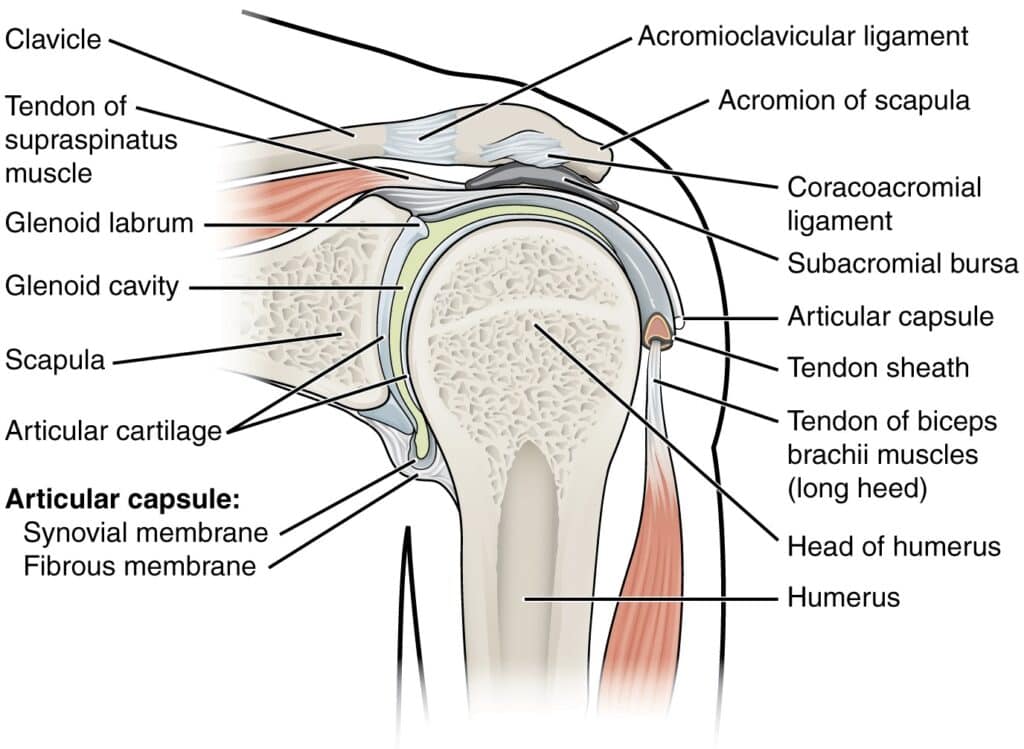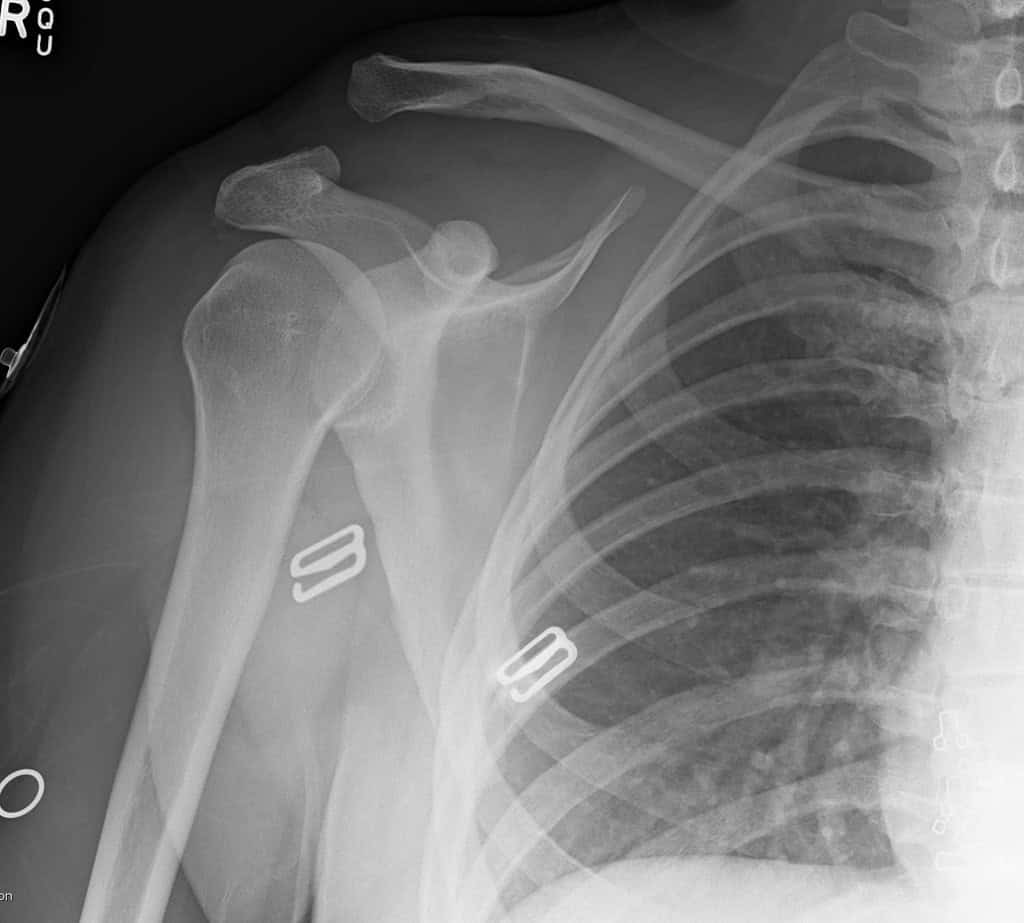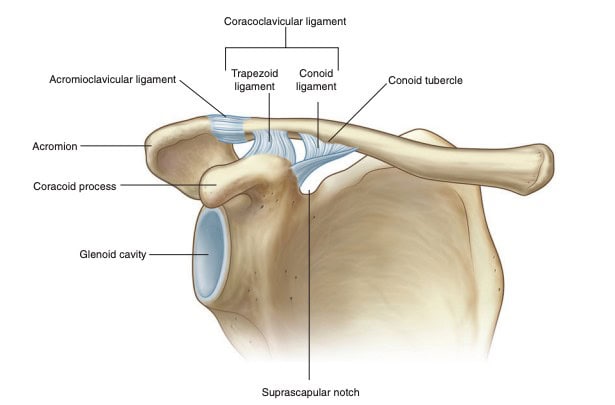The Acromio-clavicular (AC) joint is the joint formed between the end of the collar bone (clavicle) and the shoulder blade (scapula). It facilitates rotational and gliding motions and allows for shoulder movement. Acromio-clavicular dislocation is common among athletes and occurs predominantly among males.
An acromio-clavicular dislocation is more common in individuals who participate in contact sports such as rugby, wrestling, or hockey. The injury can occur by either direct or indirect trauma. Most injuries occur through direct blows to the shoulder. The direct blow results in forces acting directly on the AC joint and acromioclavicular and coracoclavicular ligaments. An indirect injury is usually position-related and can occur after a fall on an extended arm. The force then acts indirectly on the AC joint.

What does it mean to you?
Patients with AC joint dislocations will usually present with shoulder pain after an injury. They will usually retain the ability to move their shoulders but may have pain when lifting their arms above the level of their head, and when reaching across their bodies.
AC joint dislocations vary in severity. Less severe injuries can often be treated with physical therapy. Patients with less severe injuries, who have completed their physical therapy can often return to playing their sport of choice with little disability.
Some patients with more severe injuries may be unable to return to sport without surgical treatment. These patients will suffer from severe pain especially with cross-body arm movements, and with lifting their arms above the level of their heads.
Based on the patient’s complaints, a focused clinical examination will be conducted. The aim of the examination is to demonstrate that the AC joint has been dislocated and displaced from its original position. Your doctor will perform tests to confirm this. This may include palpating the joint and comparing it to the other side to assess for differences. He/she may also press on the joint to see if it springs back, a test known as the ballottement test.
X-rays will be used to produce images of the affected shoulder joint as well as the normal shoulder. Through this, the doctor would be able to determine which grade the injury belongs to as well as to confirm that the injury is an acromio-clavicular dislocation.

What are the treatment options?
Treatment depends on the individual’s age, lifestyle, and type of injury. Most patients with less severe injuries may be treated non-surgically first. If the patients do not respond well to the treatments, a surgical approach may then be taken. Non-surgical treatments include pain medication, physiotherapy.
Medication
Painkillers and anti-inflammatory medications would help to reduce the symptoms and alleviate the pain.
Physiotherapy
Physiotherapy helps to alleviate symptoms by reducing the swelling, restoring the range of motion and muscle control to your shoulder. Through physiotherapy, one would work with a physiotherapist to regain control over their shoulder.
Surgery
If the shoulder does not seem to be getting better after the first 2-3 weeks of the injury and if the AC joint is unstable, surgery may be recommended. The type of surgery carried out is dependent on the time from injury.
If the injury is detected within the first 3 weeks, the dislocated clavicle can be pushed back into its original location, and implants can be used to hold the clavicle in its original position. If such surgery is performed, there may be a need for subsequent removal of the implants.
If there is a delayed presentation of the injury, or if the patient has failed conservative treatment, the joint can be reduced and held in place using a tendon harvested from the knee. This is known as reconstructive surgery.
In either case, the patient will be started on gentle shoulder movements after surgery, and surgical sutures will be removed 2 weeks after the procedure.

Patients who have undergone surgery for AC joint dislocations will typically have to undergo a course of physical therapy as part of their treatment. They may be placed on initial movement restrictions for up to 6 weeks. Thereafter, they will undergo increasingly intensive shoulder range of motion exercises and strengthening exercises. Most patients can expect to make a return to sport 8 weeks to 2 months after surgery. If necessary, implant removal is usually undertaken 4 to 6 months after the initial surgery for the AC joint dislocation.
If you are looking for orthopaedic treatments in Singapore, feel free to book an appointment at The Orthopaedic and Pain Practice today! Dr. Yong Ren will be happy to give you a consultation.
For an assessment of your condition, please book an appointment with Dr. Yong Ren.